Matador Network's Blog, page 452
July 7, 2022
11 Ocean City Airbnbs That Showcase the Best of Jersey Beach Life
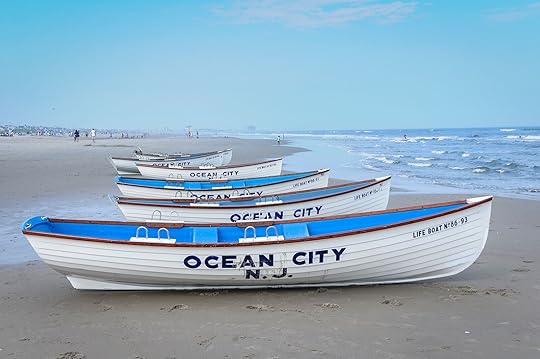
Ocean City, New Jersey, flies the flag for family-friendly getaways. Tourism in this “dry” city revolves around the eight miles of sandy beach, epic amusement parks, and the boardwalk with its snack shacks. When you tire of the bright lights, head to the oceanfront Corson’s Inlet State Park for a dose of nature. Choosing where to stay in Ocean City is only the start of the adventure. Read on for the lowdown on the Airbnb scene in Ocean City, New Jersey.
Boardwalk Airbnbs in Ocean City, New JerseyBeachfront Airbnb Ocean City, New Jersey, vacation rentalsPet-friendly Airbnbs in Ocean City, New JerseyOcean City, New Jersey, Airbnbs with a poolWe hope you love the Airbnb Ocean City, NJ, vacation rentals we recommend! Just so you know, Matador may collect a small commission from the links on this page if you decide to book a stay. Listed prices are accurate as of the time of publication.
Boardwalk Airbnbs in Ocean City, New JerseyThe Jersey Shore is all about the actual shore, so booking a boardwalk Airbnb in Ocean City, NJ, is your best bet for being the heart of the action.
Stylish shore getaway in the heart of OCNJ
Photo: Airbnb

Photo: Airbnb
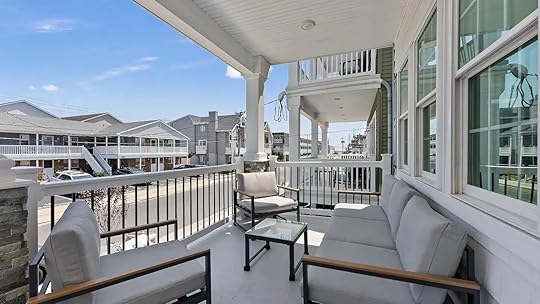
Photo: Airbnb
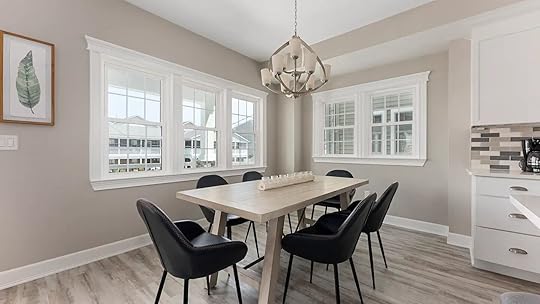
Photo: Airbnb
This immaculate three-bedroom rental is steps away from the beach and boardwalk. Open-plan living quarters are clad in neutral hues with a stone fireplace and a top-of-the-line kitchen. Each of the three double bedrooms has a TV and there’s a bathtub in the master bathroom. A large sheltered balcony is perfect for breakfasts and chatty evenings.
Six guests, three bedrooms
Price: $590 per night

Photo: Airbnb

Photo: Airbnb
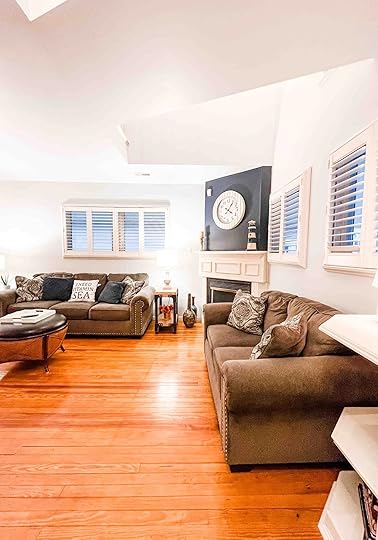
Photo: Airbnb
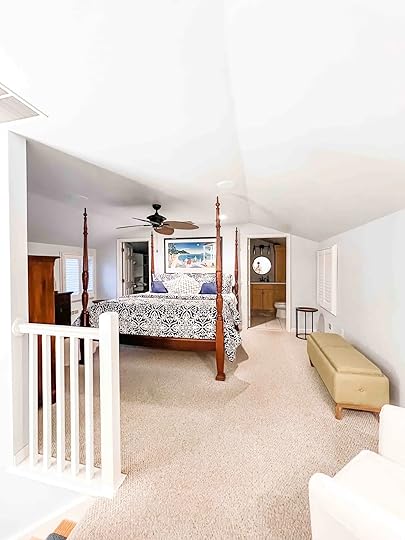
Photo: Airbnb
Located at 9th and Ocean, this downtown Ocean City Airbnb is right in the heart of the action. A postcard-pretty facade includes a sheltered terrace on the upper level with ample seating and dining space. At the rear, you’ll find a second balcony and patio for additional privacy. Cozy, modern interiors are spread over two floors plus a loft that doubles up as a bedroom and lounge.
Nine guests, three bedrooms
Price: $530 per night
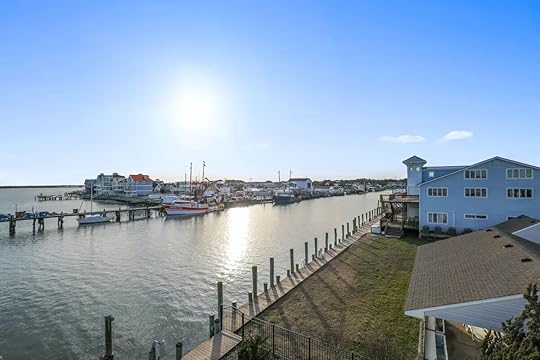
Photo: Airbnb

Photo: Airbnb

Photo: Airbnb
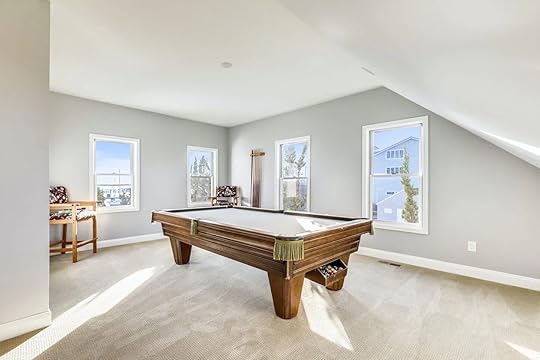
Photo: Airbnb
Convenient for the beach and boardwalk, this six-bedroom Airbnb Ocean City vacation rental features an open-plan living and dining zone. The fireplace adds coziness for winter evenings or movie nights. Three balconies offer attractive views and are ideal for sociable dinners and quiet time. An elevator is handy for elderly guests or those seeking an accessible property. Bicycles, beach chairs, and kids’ toys are available in the garage.
Fourteen guests, six bedrooms
Price: $1,009 per night
Book here
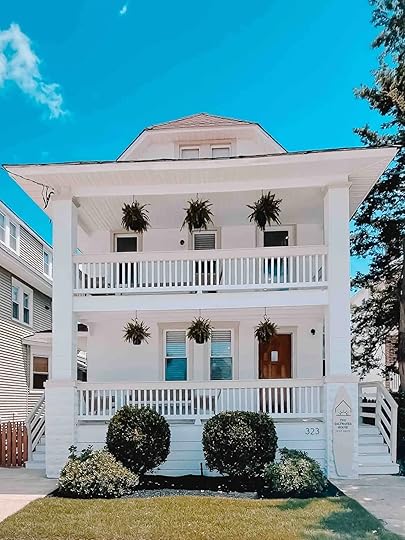
Photo: Airbnb
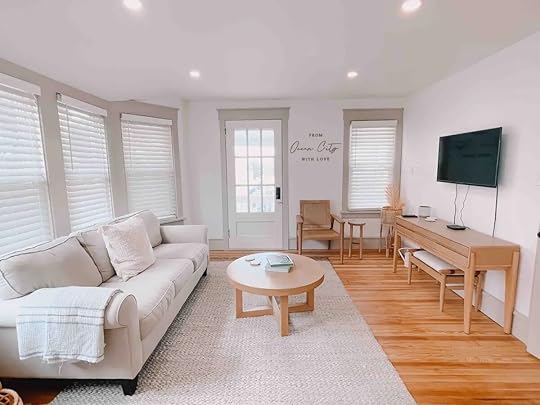
Photo: Airbnb
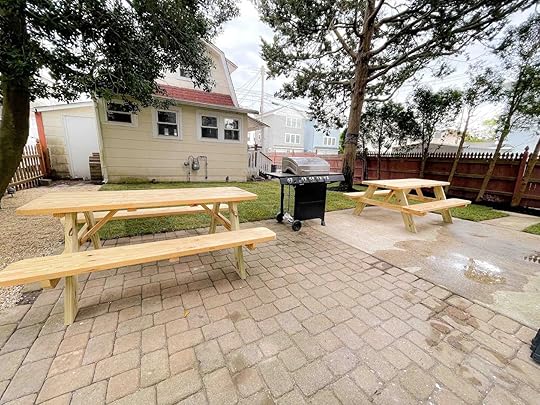
Photo: Airbnb
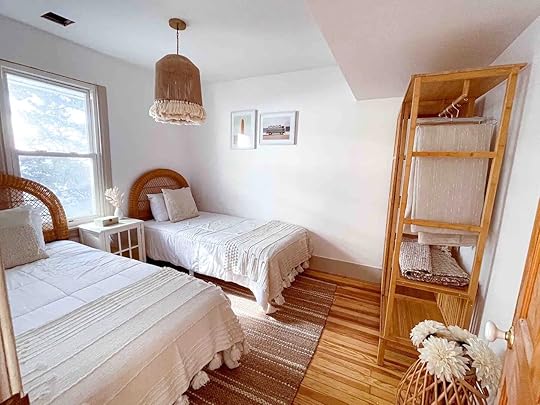
Photo: Airbnb
Located a 10-minute stroll from the sand, this picturesque vacation rental is styled per modern tastes. Beach-themed prints hang on the walls while bohemian appliances add a laid-back charm. A compact yet comprehensive kitchen spills into the living room while the backyard is spruced up with picnic benches and a grill. Hire a couple of bikes from town and you can secure them at the provided bike racks.
Six guests, three bedrooms
Price: $435 per night
Ocean City, New Jersey, beachfront Airbnbs put you steps from the water. This, of course, means you have first access to the sand each morning for prime towel placement.
Luxury beach block with full ocean views
Photo: Airbnb

Photo: Airbnb

Photo: Airbnb

Photo: Airbnb
This luxurious Ocean City condo occupies the top floor and rewards you with ocean views. Interiors are artistically appointed with designer wallpaper, fixtures, and nautical prints and trinkets. The open-concept lounge and kitchen are warmed by a fire while light flows in through the picture windows. A balcony is fitted with a dining table and sun loungers to suit all moods.
Eleven guests, four bedrooms
Price: $1,930 per night

Photo: Airbnb
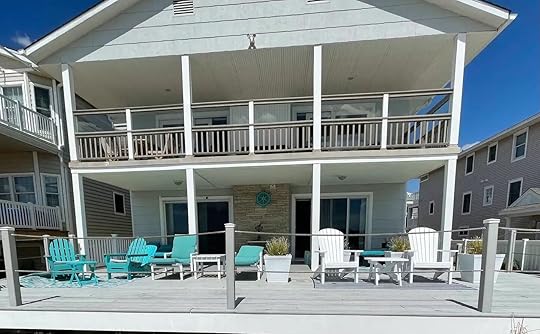
Photo: Airbnb
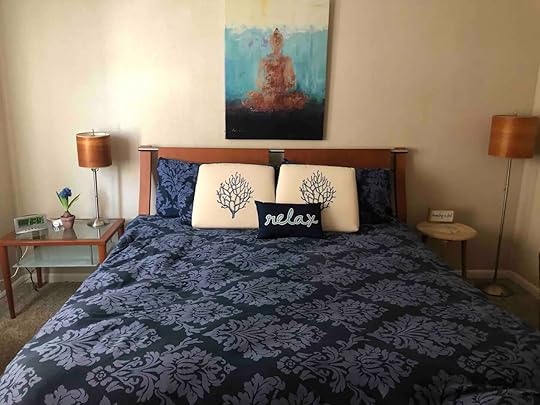
Photo: Airbnb
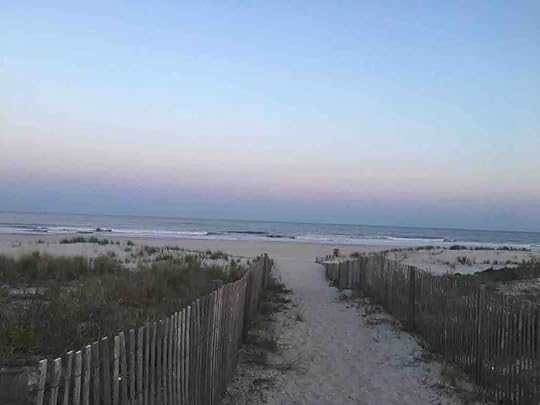
Photo: Airbnb
Situated directly on the sand, this beachside Airbnb in Ocean City, New Jersey, gives you the privilege of being the first in the water. Sit out on the immense deck with the back doors open while the sea breeze and salty air waft through the home. Shabby chic rooms and living spaces make this child and pet-friendly rental feel like home. The beach house is a 10-minute drive from downtown and the boardwalk.
Eleven guests, four bedrooms
Price: $1,010 per night
Travel is better with pets. Don’t let anyone counter that statement. These pet-friendly Airbnbs in Ocean City, New Jersey, mean its no hassle to bring the pup.
The Gardens beach cottage
Photo: Airbnb
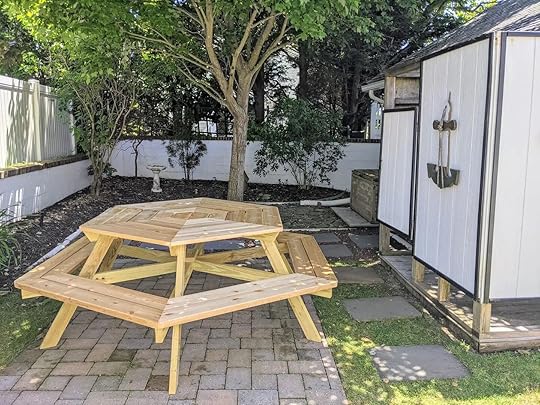
Photo: Airbnb

Photo: Airbnb
This cute Ocean City Airbnb vacation rental is equally suited for summer vacations, winter getaways, and workstations. Pleasing touches include the full bathtub, the full kitchen, and the rear room that serves as a reading nook or third bedroom. The patio leads onto a fenced backyard lawn where dogs and kids can burn off their energy. An outdoor shower is a bonus for beachgoing parties.
Nine guests, three bedrooms
Price: $485 per night
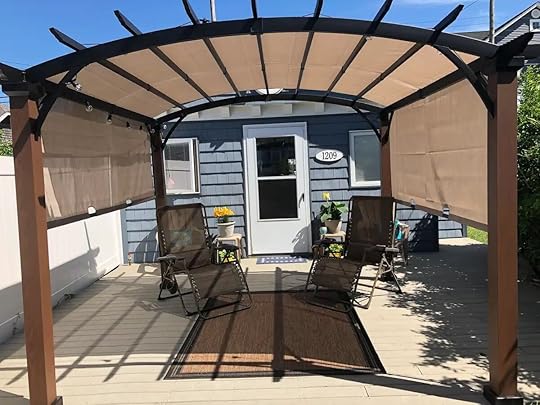
Photo: Airbnb
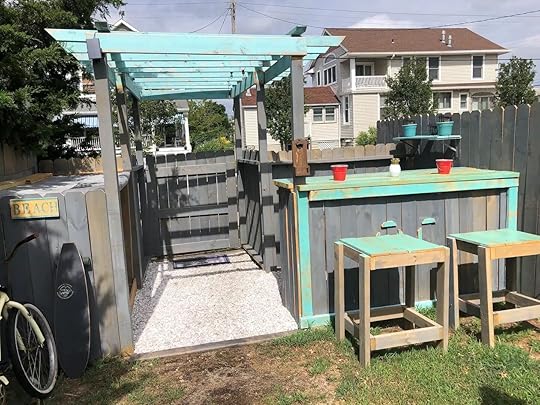
Photo: Airbnb
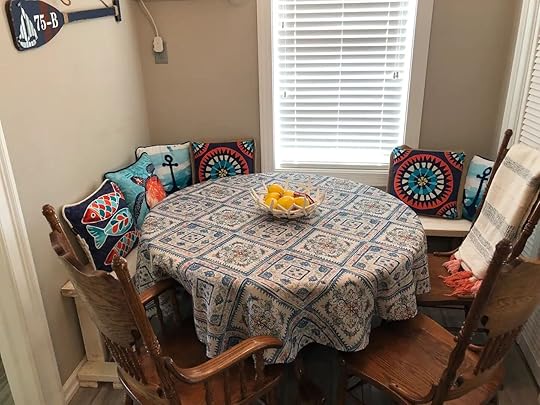
Photo: Airbnb
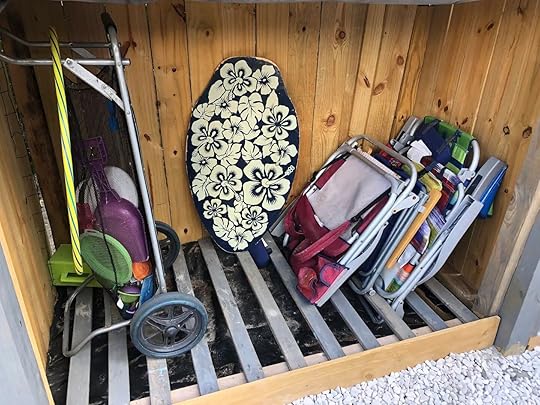
Photo: Airbnb
Centrally located, this pet-friendly Ocean City Airbnb is handy for getting around the key sights and beaches. Touted as the best yard in town, you’ll find a bar, pergola, hammock, shower, and covered porch waiting out back. Designed for families and small groups, the interiors of this two-bedroom bungalow are snug and inviting. Beach chairs and kids’ toys are included in the rental.
Five guests, two bedrooms
Price: $255 per night
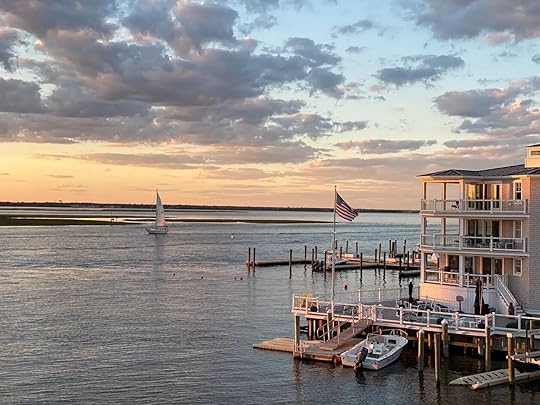
Photo: Airbnb

Photo: Airbnb

Photo: Airbnb
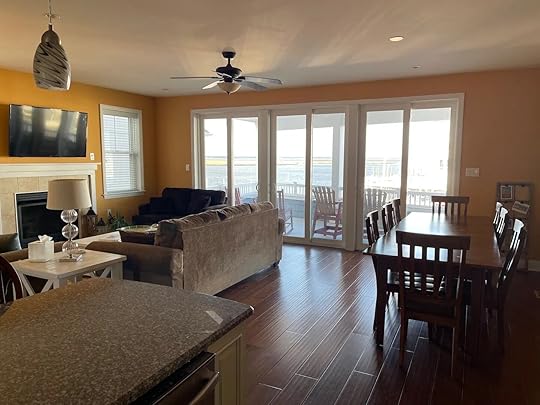
Photo: Airbnb
This pet-friendly Airbnb in Ocean City, New Jersey, is situated in a tranquil lagoon that peers over the intra-coastal waterway and marshlands. A boat slip is available subject to a small surcharge. Floor-to-ceiling windows, decks, and a backyard with a grill capitalize on the water views. The home is spacious and well-equipped with a generous fire for winter rentals.
Ten guests, four bedrooms
Price: $514 per night
Nothing goes together like the beach and the pool. These Ocean City, New Jersey, Airbnbs with a pool give you a place to cool off after a day on the sand.
Ocean City home on the bay with pool
Photo: Airbnb
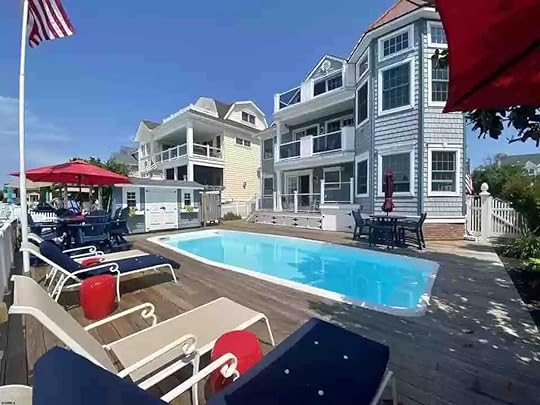
Photo: Airbnb
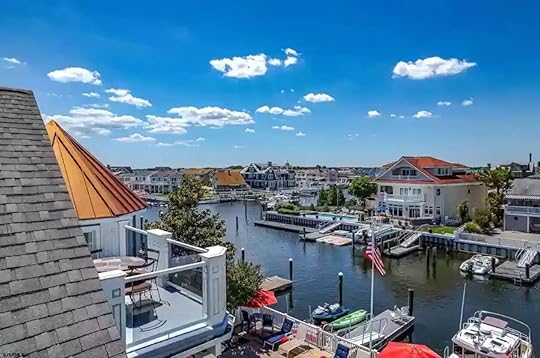
Photo: Airbnb

Photo: Airbnb
This brand new Airbnb in Ocean City has a pool and three water boat slips for easy access to crabbing, paddle boarding, and lagoon swimming. Interiors are dressed as per a maritime style that makes it feel akin to a houseboat. Three balconies overlook the swimming pool and sun terrace while the loft space is fitted with a bar.
Thirteen guests, four bedrooms
Price: $1,300 per night
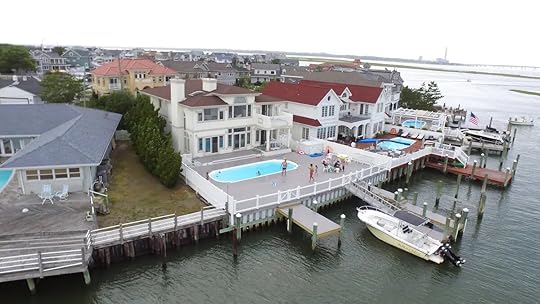
Photo: Airbnb

Photo: Airbnb

Photo: Airbnb
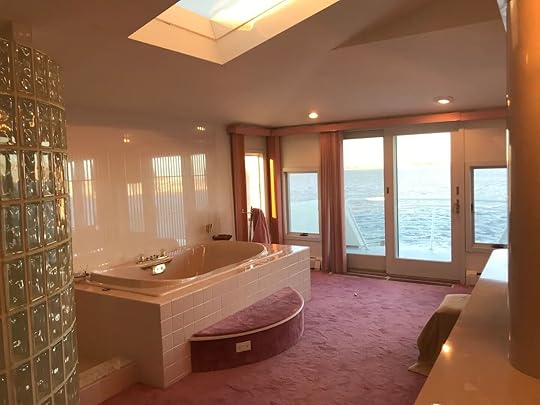
Photo: Airbnb
This luxurious and family-friendly Ocean City Airbnb has a heated outdoor swimming pool and three boat slips. Stand-out features include the grand piano in the lounge, a telescope, and a spa bath in the master suite that overlooks the water. Perfect for all-season stays and catching the dramatic sunsets and sunrises that grace the city. 
Sixteen guests, five bedrooms
Price: $900 per night
The 5 Best Places To Visit in Wyoming, According To the Superintendent of Grand Teton National Park

More than 4 million travelers visit Yellowstone National Park each year, and more than 3 million visit Grand Teton National Park. Both parks are massive, and these numbers shouldn’t deter you – but if easy solitude is what you’re after, Wyoming has plenty to offer.
Matador spoke with Chip Jenkins, Superintendent at Grand Teton National Park, to get his insight into where travelers should spend time in Wyoming beyond the incredible national parks.
Jenkins has been at the helm of Grant Teton National Park since 2020 and has nearly four decades of experience behind the scenes of America’s national parks. First, Jenkins encourages travelers to Wyoming to check out the Wyoming Wonder Map, which shows places to visit in Wyoming based on visitors’ preferred activities and makes recommendations on where to stay.
“A part of what makes Grand Teton special is that it is part of a national system of parks that preserve America’s heritage for today’s and future generations,” Jenkins says. “It is truly remarkable that this country supports this kind of heritage preservation and continues to strive to make it accessible to our people.”
Wyoming is the least-populated state in the union, but the tenth-largest by area. That means there’s tons of open space to explore. Jenkins recommends these five places.
Bighorn Mountains
Photo: Steve Cukrov/Shutterstock
For a high-altitude adventure beyond Yellowstone and Grand Teton, head four hours east to the Bighorn Mountains. There, you’ll find more than 1,200 miles of trails to cover several weeks’ worth of exploring between Bighorn National Forest and Cloud Peak Wilderness. Wildlife spottings abound here at near-Yellowstone levels, including elk, deer, and antelope. If you hike through gorgeous Tensleep Canyon, you can stay overnight at one of the many campgrounds available throughout the Bighorns or opt for backcountry camping if you’re truly adventerous.
You’ll want to make it an overnight — or potentially two nights — if you attempt the 13,171-foot Cloud Peak, as the hike is 23 miles roundtrip. Sheridan is the largest nearby town and offers a variety of dining and lodging options.
Time to allow: One to three days
Green River Lakes and Squaretop Mountain
Matador’s guides to where to stay on your Wyoming road trip:
11 Jackson Hole Airbnb vacation rentals perfect for your next trip These Yellowstone Airbnbs near each entrance make for the perfect gateways to the park Plan your summer escape to these rustically gorgeous Rocky Mountain cabins

Photo: Cavan-Images/Shutterstock
Near Pinedale and just south of the national parks, the Green River Lakes offer a tranquil getaway from the hectic scene of Jackson in the summer. Get out on the water by boat, paddleboard, or kayak, or explore the beautiful Clear Creek Canyon on foot. One must-do in the area is the Clear Creek Natural Bridge, a rock bridge over a creek accessed via the 10-mile roundtrip Clear Creek Trail.
Squaretop Mountain is one of the most beautiful places to visit in Wyoming and certainly among its most photogenic natural landmarks. You can hike to the top of it, though the route is 30+ miles roundtrip and requires at least one overnight.
Time to allow: Two days
Wind River Indian Reservation
Photo: dunn4040/Shutterstock
Southeast of Yellowstone National Park is the Wind River Indian Reservation, the nation’s seventh-largest. It’s home to the Eastern Shoshone and Northern Arapaho people and a prime place to visit to learn about regional history while simultaneously exploring the outdoors.
Your first stop should be the Eastern Shoshone Tribal Cultural Center in Fort Washakie to gain an understanding of how the region’s Indigenous peoples lived and cared for the land prior to the arrival of white settlers. Sacajawea, who guided Lewis and Clark, is buried nearby and many artifacts from her time are on display here at the center.
Hike the Wind River Range, and if you’re a climber, attempt the famed Wind River High Route. Other recommended activities for your intenirary include spending a night at the Shoshone Rose Casino and Hotel, fishing the Wind River, or taking a rafting trip with Wind River Canyon Whitewater.
Time to allow: One to two days
Devils Tower National Monument
Photo: Sulae/Shutterstock
Devils Tower rises 867 feet above the surrounding Black Hills of northeastern Wyoming. If you’re a climber, you already know it’s among the country’s most popular rock climbing destinations.
Between the tower and the NPS-protected land around it, there are five hiking trails, a campground, and several scenic viewpoints that offer distinct perspectives on this monolith made of rare phonolite porphyry igneous rock. And yes, it probably looks familiar: it’s the backdrop of the final scene in 1977’s Close Encounters of the Third Kind.
Time to allow: Half-day
Alcova Reservoir
Photo: John Doe/Shutterstock
Just southwest of Casper, Alcova Reservoir offers a similar experience to Grand Teton National Park’s Jackson Lake, but without the crowds. Motorboat rentals including jet skis are available at Alcova Resort, though the most peaceful way to experience the water is on a kayak, raft, or paddleboard. It’s one of the most beautiful, but also least-crowded, places to visit in Wyoming if you’re trying to spend time on the water to beat the summer midday heat. The Black Beach Campground is the largest and offers excellent beach access, though the Fremont Canyon Campground gives you the best access to exploring the hikes and water of the canyon. 
Time to allow: One to three days
More like thisNational ParksThis Epic Fall Road Trip To Yellowstone and Grand Teton Bypasses the CrowdsGreen Travel Ideas for Your Green Season Trip To Thailand
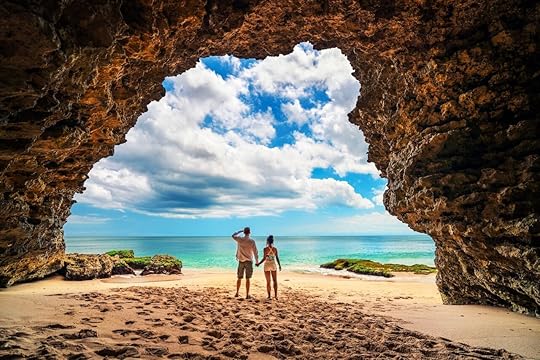 Thailand is open! Book your flight on Qatar Airways now.
Thailand is open! Book your flight on Qatar Airways now.A tropical climate blesses Thailand with warm temperatures all year-round, and while some seasons are balmier than others, there’s never really a bad time to go. Green season — aka rainy season, roughly June to September — marks the months when nature comes alive, the national parks flourish, and the waterfalls flow at full throttle.
Green season doesn’t mean solid rain, either. Showers usually arrive in the afternoon, and there are dry days amidst the thunder. What’s more, the rains are relatively easy to avoid, as Thailand has different climates across its various regions. Dodge the bulk of it (and the bulk of the crowds) with this guide, and spend your time enjoying sustainable, community-led, uncommon adventures in this off-peak season.
North Thailand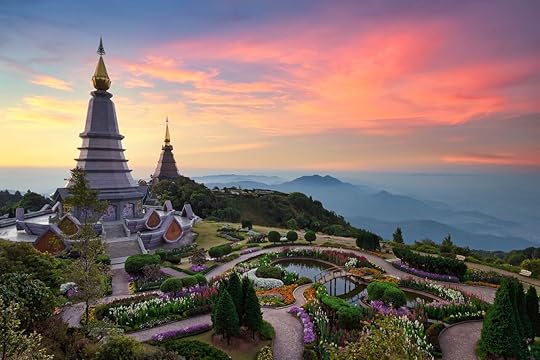
Photo: structuresxx/Shutterstock
North Thailand keeps visitors plenty busy with its forests, mountains, and ancient cities. The former capital of Chiang Mai has transformed into a wellness-conscious destination — and the city has a thriving farm-to-table food scene to match its healthy reputation. Case in point: Ginger Farm grows produce for their two city-based venues, Ginger Farm Kitchen and The House by Ginger, and you can visit their rural headquarters for a farming workshop.
Another long-standing favorite, Pun Pun Vegetarian Restaurant is the front end of an organic farm and seed-saving center that also focuses on rewilding. For some rural R&R, meanwhile, book a stay at Mala Dhara Eco Resort, an earthy retreat center and organic farm serving tasty plant-based foods.
To get further out of the city and up into the mountains, take the winding northwestern road to Pai, a small, relaxed town surrounded by sprawling rice paddies that are at their most vivid green in the off-season. It’s also a good time to visit Pai’s hot springs and waterfalls, as the waters run deep this time of year.
Southeast of Chiang Mai, Lampang is a town with some serious history, being one of the teak wood industry’s main hubs. You can stay at a host village such as Ban Tha Ma-O Community to meet the locals and try their foods and handicrafts. It’s just one of 22 community tourism opportunities offered by Thailand Village Academy.
Central (Bangkok) and North East Thailand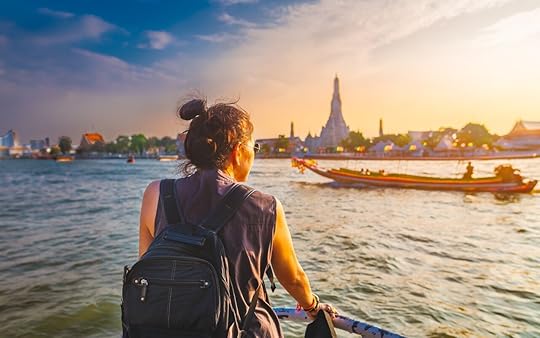
Photo: Day2505/Shutterstock
The rainy season in Bangkok stretches from April (the hottest month) to October, but unlike in many of the neighboring areas, storms often pass quickly. Think of the ephemeral showers as the perfect excuse to pop into a street food stall and grab lunch or to simply cool down during the heat of the day.
When you’re in the city, opt for an eco-stay such as Bangkok Tree House, where the environment is so tranquil you’ll wonder if you’re still in the capital. And check out local rewilding initiatives such as the sprawling Metro Forest, a massive regeneration project just a few miles as the crow flies from Suvarnabhumi International Airport.
If you’re craving more off-the-beaten-path experiences, there are blossoming community tourism projects like Meet in the Village, where guests are invited to take part in workshops at 10 villages across the country. Their list includes Kalasin and Roi Et in the North East, giving visitors the opportunity to really immerse themselves in local village culture.
And no green season trip to North East Thailand should skip the Ubon Ratchathani Candle Festival. The two-day event packs in tons of cultural festivities including music and dancing, theater shows, Muay Thai boxing matches, and street processions. Admire the amazingly intricate candlewax sculptures on display (which give the festival its name), and take this opportunity to explore the regional cuisine of Isan, Thailand’s North East.
South Thailand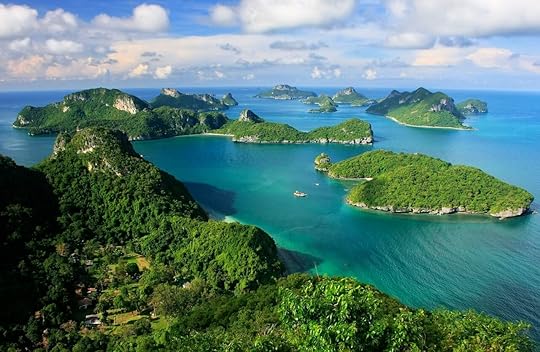
Photo: Don Mammoser/Shutterstock
The southernmost reaches of Thailand stretch long and thin like a land bridge to Malaysia, with hundreds of islands dotted on both sides of the mainland. To the west is the Andaman Sea, which has a different climate than the Gulf of Thailand in the east.
On the Andaman side, Thailand’s largest island, Phuket, experiences monsoon-driven rainfall from May to October. However, this tends to lower the temperature, meaning green season might just be the perfect time to go if you’re looking to avoid the hottest weather. Phuket’s colorful old town is great to visit in the off-season — smaller crowds make the picturesque Sino-Portuguese architecture all the more enjoyable. There’s a number of sustainably minded resorts on the island to consider for your trip — the Amari Phuket is a sophisticated stay and just one of many spots across the country that has adopted practices.
On the mainland, there are myriad natural wonders to take in and enjoy. Krabi Hot Springs are second only to those in Pai, with waters heated from the Earth’s core bubbling into a river, primed for a soak. The wildly scenic national parks of Khao Lak and Khao Sok are at their most vibrant during green season, and both have a solid selection of eco-resorts. Check out the sumptuous Merlin Resort near the former and the charming Our Jungle Camp close to the latter.
Off the eastern coast, the Gulf of Thailand sees more rain arriving in October and November, so plan your early green season trip activities here. An off-season visit to the Samui archipelago, including luxurious Ko Samui, vibesy Ko Pha-Ngan, the neighboring paradise islands of Mu Ko Ang Thong National Marine Park, and the small, relaxed Ko Tao, means fewer crowds and lower prices.
There’s loads of green-minded initiatives on these islands, too: Trash Hero organizes regular clean-ups of Ko Samui and Ko Pha-Ngan’s gorgeous beaches, as well as other beaches around the country. Ko Pha-Ngan is home to a lush community garden, just one of the many projects of Eco Thailand, and there’s ocean-friendly, mindful diving in Ko Tao, provided by the likes of water enthusiasts Nitro Koh Tao. Jump in and watch as your green season adventure transforms to deepest blue. 
This Florida Resort Now Has a ‘Constellation Concierge’ To Help Guide Your Stargazing

Florida’s beaches are well loved during the day, but some might say it’s even more wonderful to visit at night. To see why, all you have to do is look up and partake in some Florida stargazing.
The Hillsboro Beach Resort in South Florida recently announced the addition of a “constellation concierge” to help guests better understand the stars. The resort is on a private beach far from high-traffic areas, making it a great place to do some stargazing. With a clear night sky, guests can get a better view with one of the property’s Zhumell telescopes — a brand known for making telescopes that can help people see even faint constellations. If a guest opts for going with a constellation concierge, they will provide a Sky Map that will help locate stars and planets from the hotel’s beach, as well as a guide of activities based on your zodiac sign.
The addition comes at a good time for astrotourism. Basing trips around the night sky has become big at many luxury hotels worldwide, everywhere from Texas to South Africa.
It’s also, of course, booming at campgrounds that have dark skies perfect for stargazing, like the Big Cypress National Preserve in Florida, Death Valley National Park in California and Nevada, and James River State Park in Virginia. But there’s nothing like seeing the stars while listening to waves crash behind you as you sit on a blanket in the sand.
9 Tantric Retreats in the US Where You Can Embrace Your Spiritual (and Sexual) Self

Depending on your age, you probably first heard about this subject via Sting, or Finch from American Pie 2 — and due to these somewhat questionable sources, are none the wiser as to what tantric sex actually is. Are we talking spiritual? Sexual? Will you have a 14-hour orgasm just by looking at someone? Allow us to explain and, perhaps, introduce you to a tantric retreat.
The word “tantra” refers to a type of instructional text that is usually written as a conversation between a god and a goddess. Many of these texts, which were written around 1,500 years ago, included socially transgressive rituals that promoted engagement with the taboo, including sex rites, destruction, intoxicating substances, and…human remains. The goal? Shift people’s thoughts from pure/impure to everything is sacred and intertwined.
Today, when we talk about tantra in the West, we’re usually talking about neo-tantra, which often uses sexuality as a route to self-exploration. Followers talk of a greater connection with their partner, emotional healing, longer-lasting orgasms, and relaxation. It’s based on more modern philosophical practices rather than the traditional Tantric Scriptures (the human remains bit didn’t make the cut, soz), and sexuality features more prominently.
To help you navigate these complex waters, we’ve rounded up nine of the best tantric retreats in North America. Sadly none of these are Sting-endorsed (we did look), but who wants to pay megabucks for some celebrity-backed getaway anyway. These nine are the real deal and run by highly rated experts. Some are sex retreats, some are not.
Tantra classes at the Esalen Institute, California
Photo: Esalen Institute
Set high above the crashing waves of Big Sur, the Esalen Institute makes a seriously scenic spot to get in touch with your spiritual side. This favorite of the yogic crowd has been the go-to for new-age healing in California for over 60 years — so rest assured they know their stuff. As well as a full program of yoga, meditation, and tantric classes on offer, there’s also dance, lectures, and massage — plus the opportunity to grow your own organic food (and tuck into said homegrown goodies in-between classes).
Education underpins everything this organization does: from one-off lessons to scholarships and MBAs — there’s something on offer for all levels of commitments. The institute currently runs a tantric retreat (which they stress do not cover tantric sex), as well as a range of other courses and workshops. Check their calander for details.
Intimacy Retreats, various locations, US and worldwideCertified sex and intimacy pros Richard and Diana Daffner are on-hand to guide you through tantra tai chi — a practice pioneered by the couple and taught at all their retreats, both in-person and online. Spirituality plays a core focus here, with students being taught to connect the body with the mind to better live in the moment. Once you’re in this space, they’ll show you how to channel this energy into forging a deeper connection with your partner. There’s no nudity in the classes (or any of these on the list for that matter), but you’ll work on tightening the sexual muscles (called pubococcygeal, or PC) to focus your attention on this core part of your body.
You’ll need to source your own accommodation and food if you head off their in-person tantric retreat — but the good news is that keeps the cost down. For ultra-low-budget mode, sign up for one of their video programs and save on travel.
Laura Carrotti’s six-day tantra retreat, New York
Photo: Laura Carrotti
Laura’s courses merge tantra with traditional yoga and breathwork to help guests get back in touch with their sexual selves. She believes sexual energy is the core of our being — and when it’s blocked, we’re not reaching our full potential.
The accommodation itself is hidden away in a leafy forest (which will look dreamy in fall colors come October) and comes equipped with soft bamboo floors for yoga (and sleeping), plus the option to choose from futons in shared spaces to super-luxurious double beds in private rooms. All meals are included, and are homecooked and sattvic (that’s made using seasonal ingredients). Laura’s retreats come highly rated — five-star across the board, so book fast to secure a spot.
Jacqueline Hellyer, worldwide and onlineAs one of the world’s leading sexperts with thousands of hours teaching, training and talking about intimacy to her name, Jacqueline Hellyer is a safe pair of hands. She runs various courses around the world, but being Australia-based, most happen there and in Bali. That doesn’t mean Americans need to miss out, though — her Men’s Sexual Mastery and Women’s Sexual Empowerment courses are all available online.
Combining tantric and taoist wisdom with a dash of science, her online sex courses are designed to push attendees up and away from society’s limited societal understanding of what sex is and should be.
Five-day sacred tantra retreat in Sedona, Arizona
Photo: LeStudio/Shutterstock
Join tantra teachers Andrea and Jose, plus nine other students in the heart of the Sedona National Park desert. On this retreat, you’ll learn how to become a reiki healer, participate in ancient rituals, and dive into an array of workshops focused on breathwork, conscious touch, and tantric philosophy. You’ll also participate in a cacao ceremony (that’s drinking a brew made of native cacao with the rest of the group) followed by an ecstatic dance session to help you relax and connect with your fellow students. Thanks to its location right in the heart of Sedona, you’ll have ample opportunity to hike and connect with nature in-between classes.
Tantra Festival Mexico, Tulum, and worldwideDelivered in both Spanish and English, Tantra Festival Mexico (TFM) offers a full program of workshops, meditation, dance, and rituals to feed your soul and speed you towards deeper self-love. Held in Tulum, Morelos, this five-day four-night event includes a packed schedule of guided Tantric workshops (with different levels of intimacy to choose from), sensory rituals, and tribal gatherings — plus three delicious homecooked Mexican meals a day. Prices for the shared double room start from $884 and for that, you get an ensuite bathroom and direct access to a white sandy beach lapped by Caribbean waters.
Seven-day Bliss in Relationship Tantra Couples Retreat, California
Photo: Vedanta Spiritual & Holistic Retreat
Ideal for beginners and intermediate-level yoga folk, this retreat combines a blend of disciplines (including tantra) to help couples reconnect, recharge, and take their sexual pleasure to the next level. Under the expert guidance of course leader Nayano, a senior teacher of ipsalu tantra, guests will learn how to use cobra breath, unlock their sexual energy, heal stored emotions, and more.
The tantric retreat itself takes place in an eco-village nestled slap bang in the heart of Sequoia National Forest, a mile away from the California Hot Springs, and 18 miles away from the Trail of 100 Giants. So if you fancy unwinding among some of America’s premier natural sights, you’re in the right place. Offering excellent back for your buck, all study materials, accommodation, classes, and meals are included in the price — plus cooking classes, guide-led nature hikes, and pre-and post-retreat support. Another five-star-rated retreat, book soon to secure your spot.
Ashley Encantada Tantra Couples Retreat, California, Mexico, and worldwideCertified tantra and hatha yoga instruction, relationship coach, EFT practitioner, and more — Ashley Encantada can walk the walk. With a focus on emotional, psychological, and spiritual teachings, she’ll guide you through past trauma, pain, and fear toward the fulfilling sex life you’ve always wanted.
She runs various workshops around the US and Americas, plus online classes — so your options are flexible. This year’s tantra retreat is taking place in a secluded villa in San Miguel de Allende. All meals are covered, including a veggie brunch and homecooked dinner. Guests are also treated to horseback riding in a vineyard, salsa classes — and of course, plenty of tantra-led yoga and intimacy exercises to rekindle the romance. Guests get pre-and post- calls with Ashley, but for a little extra expert guidance, add one-on-one lessons onto your package.
The Fire That Pierces The Heart Love and Intimacy Couples Retreat, California
Photo: Dawn Cartwright
One for all levels of experience, this tantric retreat is aimed at couples who want to deepen their connection. What does that mean, you ask? Well allow Dawn Cartwright to guide you: on this four-day retreat, you’ll learn to harness ecstatic energy, heighten your sensitivity, and nurture greater intimacy with your partner via neo-tantra methods. Dawn also has a degree in psychology (so relax if your woo-woo sensors are on high alert) and has been featured in the likes of Cosmo, Marie Claire, and GQ.
Accommodation-wise, you’ll be staying in the Vedanta Spiritual and Holistic Retreat, an Eco Village and International Center for Holistic Learning right in the heart of Sequoia National Forest — putting great hikes, California Hot Springs, and the Trail of 100 Giants within reach. The retreat is all-inclusive for the price, too — that’s rooms, all lessons, and three square organic vegan meals prepared freshly each day. 
What It’s Really Like To Fly in Luxury in Emirates Business Class

As I write this, I’m cruising at 43,000 feet, sipping Veuve Clicquot in a literal bar in the sky and this is the first time I’ve had the privilege of typing those words. Ever since I was young, it’s been my dream to fly on, arguably, the most innovative, luxurious, and unique airplane in the world: the Emirates A380 business class.
There is truly nothing more glamorous than creamy leather seats, dim, warm lighting, and the rich wood inlays, so if you’ve been wondering what it’s like to fly one of the coolest business class products in the sky, here’s everything you need to know.

Photo: Voyager Guru
The ground experienceWhile the aircraft itself is obviously the highlight of the experience, everything starts on the ground. The bold red color of Emirates Airlines greets passengers in the JFK terminal and business travelers get a little something extra with the red carpet welcoming them to the separate check-in station.
The A380 features a whopping 76 business class seats and in total holds over 450 passengers, essentially an extra 100+ more than a standard Boeing 777. This means there are a lot of people going through check-in, security, and boarding. Economy check-in lines were particularly long at JFK airport this evening, leaving passengers waiting for over an hour to check-in.
Depending on where you are flying from and if you have access to a lounge, you may be boarding on the second floor of the plane. However, entered with the rest of the plane and therefore had the opportunity to climb the stairs of the A380, which was actually a magical experience in and of itself.
Emirates A380 business class cabinThe brand new Emirates A380 business class cabin is made up of 76 seats, all with aisle access in a 1-2-1 configuration. Business and first are located on the top deck of the plane with the famous bar located at the back of the aircraft.
The newly retrofitted A380 features plush, creamy leather seats, dark wood trim, and elegant lighting, a big upgrade from the older A380s you may have seen around the internet. The seats themselves remind me more of a luxury Maserati or Lamborghini rather than an airline seat.

Photo: Voyager Guru
One of the famous features of the aircraft is the in-seat minibar. Each passenger will find a minibar that contains a Perrier, two sodas, an Evian bottle of water, and a glass. While it’s not refrigerated, it does feel like an added luxury touch and I definitely took advantage of the in-seat Perrier before take-off. Guests are also provided with male and female Bulgari amenity kits.
If you’re looking to score the best seats in business, look for open seats A or K for the most privacy.

Photo: Voyager Guru
Each seat features a large LCD screen, separate hand-held remote, and tablet for entertainment. There are thousands of hours of content in many languages, ranging from podcasts to TV shows, to movies and radio.

Photo: Voyager Guru
Emirates A380 business class menus and takeoff experienceYour Emirates experience begins before take-off with a glass of Veuve Clicquot or orange juice while you get comfortable in your seat. Paper wine and dining menus were handed out before take-off and orders were collected shortly after we were in the air.
The Emirates A380 business class bar
Photo: Voyager Guru
As we waited for our meal, we had to go to the bar. The bar is such a novelty and it really was a dream come true. The flight attendants mix up cocktails from their recipe book while you get a chance to relax in a different setting than your seat at 43,000 feet. They also serve hot and cold snacks and appetizers in the bar. Throughout the flight, it was fairly quiet so we never had trouble snagging a booth.

Photo: Voyager Guru
The Meal ServiceAfter returning to my seat, I started the meal service with some seared prawns, which had a very nice, refreshing taste along with the lobster and prawn ravioli. While it wasn’t quite the meal we had on our Air France business flight to Paris last year, it was certainly delicious and went well with the constant flow of Veuve Clicquot.

Photo: Voyager Guru
After our meal, the flight attendants came through to turn down our “bed” with a fluffy down mattress topper, making the leather seat into a very comfortable lay-flat mini-twin bed.
We headed back to the bar, regardless of the fact that it was well past 2:00 AM at this point, because…there’s a bar in the sky, duh.
We spent several hours chatting with the flight attendants and taking pictures behind the bar, so much so that we never realized it was after 4:00 AM. At the point when we could barely keep our eyes open any longer, we headed for a restful sleep in our lay-flat beds.
Given that this flight was about 15 hours, I didn’t feel guilty for sleeping a solid seven of them under a cozy down comforter. By the time I rose from my surprisingly comfortable slumber, it was breakfast.

Photo: Voyager Guru
I settled in with a nice avocado omelet, fresh croissant and fruit, along with a cappuccino. I had been far too excited and preoccupied to watch a movie earlier in the flight, so with a few hours left, I settled in to watch Queenpins from the comfort of my seat.
Overall, the Emirates A380 business class experience is truly unique and unforgettable. The newly renovated cabin is stunning, the service is attentive and excellent, and the ability to enjoy a few cocktails in the bar is next level. So the question remains…
Where do they fly and how do you secure a seat?Emirates is flying their famed A380s all around the world, with new routes popping up in the post-COVID world. For now, here are some of the latest routes you will find with the A380.
Los Angeles to/from DubaiNew York (JFK) to/from DubaiNew York (JFK) via Milan to/from DubaiSan Francisco to/from DubaiWashington, DC (IAD) to/from DubaiDubai via Bangkok to/from Hong KongDubai to/from Kuala LumpurDubai to/from BirminghamWhether you’re looking to purchase the business fare or, hopefully, upgrade your seat, here’s how to tell what plane you are booking. On the fare page, you’ll see the plane identifier in the top right corner above the flight details. In this example, you can see it’s an A380.

Photo: Emirates
You will see the B777 in the upper right-hand corner for the other aircrafts, if not the A380.

Photo: Emirates
Be sure to look out of the main hubs like JFK and SFO to ensure the highest likelihood of booking an A380.
Finally, that leads us to the question: how do you book the business class on an A380?
The most obvious way is to book the business class fare, to begin with. Booking the business class ticket allows you to access the airport lounges, as well as the chauffeur service. The chauffeur service will pick you up at your home, hotel, or rental before your flight and take you to the airport, complementarity. These benefits are not available for upgrades.
Otherwise, you can upgrade anytime after purchasing your ticket by booking the flex fare economy ticket and paying outright for the upgrade via the manage booking page of your reservation. You can also upgrade via points with this fare.
Lastly, if you book an Economy Saver, you will likely have the opportunity to upgrade your flight upon online check-in. If there are seats available, you will be able to select an upgrade and pick your seat in the 48-hour period before your flight.
`
If you’ve been saving your points and miles for an upgrade, the Emirates A380 is worth the wait. The novelty of the bar, the exceptional service, and the gorgeous cabin make for an unforgettable experience, so much so that the actual journey itself is truly a destination. 
July 6, 2022
11 Fayetteville, Arkansas, Airbnbs for the Most Convenient Stay in the City

Fayetteville, Arkansas, is a city of live music, mountain biking, and a laid-back lifestyle. Visit downtown and Dickson Street, the center of the fun, and dive into the outdoors by walking, hiking, and hitting the bike trails. These Airbnb Fayetteville properties are minutes away from Dickson Street, putting you close to all the action.
We hope you love the Airbnb Fayetteville, Arkansas, vacation rentals we recommend! Just so you know, Matador may collect a small commission from the links on this page if you decide to book a stay. Listed prices are accurate as of the time of publication.
Fayetteville Airbnbs near Downtown and Dickson StreetFayetteville Airbnbs near walking and biking trailsFayetteville Airbnbs that are pet-friendlyFayetteville Airbnbs with a pool or hot tubFayetteville Airbnbs near Downtown and Dickson StreetDickson Street is the heart of Fayetteville, home to pubs, restaurants, shops, and more jam sessions than you’d expect to find this side of music city. If culture is your goal, these Airbnbs put you close to it.
East Fayetteville Retreat
Photo: Airbnb

Photo: Airbnb

Photo: Airbnb

Photo: Airbnb
This remodeled Airbnb in Fayetteville is in the quiet East Fayetteville district. The home features a spacious living room, a fully equipped kitchen with a breakfast nook, and three bedrooms. The house is near many restaurants, entertainment, and the city’s best music venues, making it ideal for guests who want to experience the city and have a comfortable place to crash afterward.
Six guests, three bedrooms
Price: $86 per night

Photo: Airbnb

Photo: Airbnb

Photo: Airbnb

Photo: Airbnb
Check out this downtown joint that is right in the heart of everything. This Airbnb on Dickson Street is the perfect hub to explore the city and its vibrant nightlife. It has a fully stocked kitchen, living room, outdoor patio, and a shared courtyard. This condo is a short walk to Fayetteville Square, restaurants, craft breweries, and food trucks.
Four guests, two bedrooms
Price: $182 per night

Photo: Airbnb

Photo: Airbnb

Photo: Airbnb

Photo: Airbnb
Here in this modern urban space is everything you need for your Fayetteville trip. The home features a spacious living room with privacy curtains and a fully equipped kitchen with a dining area for six, along with three upstairs bedrooms. There is a balcony off the main bedroom and a fence for backyard privacy. The home is less than a mile from downtown and 1.5 miles from U of A.
Six guests, three bedrooms
Price: $180 per night

Photo: Airbnb

Photo: Airbnb

Photo: Airbnb

Photo: Airbnb
Located less than a mile from Fayetteville Square and Dickson Street is this cute little bungalow. This tiny home has an open floor plan with a kitchen, spacious living room, and one bedroom. The house is within walking distance of parks, trails, restaurants, and more. If you’re looking for a night out on the town, this home is the perfect base for exploring attractions nearby.
Four guests, one bedroom
Price: $127 per night
Fayetteville, Arkansas, is famous for its mountain bike trails. These Airbnbs are literally adjacent to them, giving you easy access to first tracks.
Centennial Cottage
Photo: Airbnb

Photo: Airbnb

Photo: Airbnb

Photo: Airbnb
Enjoy this cottage Airbnb in Fayetteville as your base to explore the many city’s popular trail systems. This home is perfect for you if you want an authentic bike experience. This home is located on the world-class mountain bike trails at Centennial Park. Settled in a comfy off-grid setting, you’ll have amenities like a fire pit and covered patio, and for bikers, the home provides a bike rack, locked bike storage, bike maintenance tools, and access to an outdoor water hose to clean your bike.
Four guests, one bedroom
Price: $160 per night

Photo: Airbnb

Photo: Airbnb

Photo: Airbnb
This updated home is in the heart of Fayetteville and adjacent to the cycling-activated Centennial Park at Millsap Mountain. Before you go out on the trails, enjoy the spacious living room, fully equipped kitchen, and cozy bedroom. The home is less than ten minutes from U of A and downtown.
Four guests, one bedroom
Price: $96 per night
Pet-friendly Airbnbs in Fayetteville are not only common, they are stacked. These properties offer all the comforts for your full crew.
The Bowie House
Photo: Airbnb

Photo: Airbnb

Photo: Airbnb

Photo: Airbnb
Are you looking to bring your four-legged friends along with you? Well, here is a cozy Airbnb Fayetteville AR pet-friendly home near all of Fayetteville’s favorites. This newly renovated home has open concept living, dining, and kitchen areas with three luxury bedrooms. The house is minutes from downtown, U of A, Walton Arts, and more local attractions.
Six guests, three bedrooms
Price: $194 per night

Photo: Airbnb

Photo: Airbnb

Photo: Airbnb

Photo: Airbnb

Photo: Airbnb
Experience Fayetteville like a true local in this unique and modern home. The pad has a cozy living room area, a fully stocked kitchen area, and three bedrooms. Two bedrooms open up to an outdoor patio, and the master opens to a private balcony on the second floor. There is a spacious backyard with a raised wood patio with seating and a side-covered patio with a dining table.
Six guests, three bedrooms
Price: $278 per night
Cool off after your bike ride, hike, or day on the town with a splash in your own private pool at these Fayetteville Airbnbs.
Modern luxury home with fun amenities
Photo: Airbnb

Photo: Airbnb

Photo: Airbnb

Photo: Airbnb

Photo: Airbnb
Here is a perfect home for the next group getaway or family vacation, located on seven acres near all Fayetteville attractions. The house has two living areas, a large kitchen area for a feast, and six bedrooms. The fun doesn’t stop there, though. It has a huge pool, two hot tubs, a basketball court, an outdoor grill, a pool bar, shuffleboard, and more fun activities. The home is only seven minutes from U of A and Dickson street.
Sixteen guests, six bedrooms
Price: $475 per night

Photo: Airbnb

Photo: Airbnb

Photo: Airbnb

Photo: Airbnb

Photo: Airbnb

Photo: Airbnb
Indulge in this cozy modern Fayetteville pad that will be your home away from home with the family. This house has a spacious living room with two smart TVs, a couch, a ping pong table, and a kitchen that is fully equipped with all appliances. The home also has a spacious backyard area with seating, and there is a community pool just around the corner from home. 
Nine guests, four bedrooms
Price: $147 per night
The 7 Best Illinois Waterfalls You Can See Up Close and Personal

When you think of the Midwest, chances are you’re thinking of cornfields, wind turbines, college football, and Casey’s gas station pizza. Waterfalls are probably at the bottom of that list, somewhere between liberal political leanings and surfing. Well, it turns out waterfalls are much more of a midwestern draw than many unfamiliar with the area might believe. While no one’s calling Illinois the Iceland of the US, the state is home to several stunning waterfalls that more than justify a trip to the Prairie State. From the uniquely wide Thunder Bay Falls to the dual waterfalls of Tonti Canyon Creek, these are the best waterfalls in Illinois to visit on your next road trip through the heartland.
Burden Falls
Photo: Danita Delimont/Shutterstock
The most popular waterfall in Illinois, Burden Falls, is anything but a burden to visit. Located in the Shawnee National Forest, this pristine wilderness is defined by rigged rock formations and dense forests, with no trace of manmade rails or bridges. The upper falls can be conveniently seen from the parking lot, but they branch out in several directions, making them incredibly photogenic. Follow the river downstream to find the main drop, where the waterfall splits in two.
Thunder Bay Falls
Photo: Nejdet Duzen/Shutterstock
It is conveniently located just 10 minutes from downtown Galena off Thunder Bay Road, where Smallpox Creek meets Lake Galena. Thunder Bay Falls is a particularly wide waterfall. Since the lake is fed by a spring, the falls are active all year round. The falls are accessible via a small path from the parking lot, though you don’t even need to get out of your car to enjoy the views or snap a picture, as the falls are visible from the parking lot. Getting up close is preferable, however, especially if you want to feel the mist coming off the falls. Two viewing platforms are available to make it even easier to get a good vantage point for photographs.
French Canyon Falls
Photo: SB SHOTS/Shutterstock
French Canyon Falls is conveniently close to the Starved Rock State Park visitor center and is one of the most popular waterfalls in Illinois. You can reach the falls by taking a .4 mile hike, which brings you to a lookout point over the canyon. While you can enter the canyon itself by following the creek, for the best waterfall views, you’ll have to get your feet wet. It’s even a stunning site to visit in winter, as the waterfall turns into an icefall. For safety reasons, you’ll need ice cleats to visit during the winter months, as the canyon entrance gets quite slippery.
Lake FallsIn the northern part of Matthiessen State Park, Lake Falls are right at the dam of Matthiessen Lake, where the stream cuts through the sandstone canyon. To reach the falls, follow the bluff trail north from the Dells parking lot, and the falls will come into view once you come to the bridge near Lake Matthiessen. To catch a glimpse of Cascade Falls and Giant’s Bathtub, which are also located inside the park, return via the Canyon Trail and get a three-for-one waterfall experience.
Giant’s Bathtub Falls
Photo: Eddie J. Rodriquez/Shutterstock
Also located in Matthiessen State Park, Giant’s Bathtub Falls are one of the smaller falls in Illinois, but no less picturesque. Don’t come here expecting a towering Iceland-esque waterfall. Standing at a modest 10 feet high, Giant’s Bathtub is a cascade-style waterfall with water trickling over the small river bluffs in serene fashion. There are five miles of trails in the park that take you through the woods and past the waterfall, but the Dells Canyon Trail and the Bluff Trail are the most popular. For the best view of the falls, descend into the canyon after crossing the bridge near the Lake Falls dam.
Apple Canyon Lake Waterfall
Photo: Cody M Ward/Shutterstock
Apple Lake is a manmade lake with a private recreational community and amenities like a 9-hole golf course, pool, beach area, and archery range. You won’t care about any of those distractions, though, once you set your eyes on the waterfall. The lake spills into Hell’s breach, creating a tall and pretty impressive waterfall. There are several trails throughout the nearby Apple Canyon State Park to explore the limestone bluffs, deep ravines, streams, and springs, but to visit the waterfall, all you have to do is park your car. It’s conveniently visible from the lot.
Tonti Canyon Creek Waterfalls
Photo: Jason Patrick Ross/Shutterstock
Located in Starved Rock State Park, the Tonti Canyon Creek Waterfalls are a two-for-one deal. Hike a beautiful path to the end of the canyon to find two falls, nearly side by side. A six-mile hiking loop is the best way to enjoy the bluff and river areas. Along the way, you’ll go through several scenic overlooks, even passing LaSalle Canyon Falls, Tonti Falls, and several rivers. There are also plenty of overlooks for views of the Illinois River and an upper view of many of the surrounding canyons. 
7 California Wine Caves You Can Visit for a Tasting Unlike Any Other

If you’ve ever visited a winery or gone on a vineyard tour, you might have heard the staff talk about the wine cave – an underground structure dedicated to the storing and aging of wine. However, wine caves aren’t just for storing wine. Wine caves are a useful method for naturally creating the ideal conditions for storing wine, because the caves (or crayères as they are known in France) have high levels of humidity and can be temperature controlled to aid the aging process. Wine caves are thousands of years old, and were (and remain) the ideal way to protect the aging wine from sunshine and heat.
Their practical uses aside, wine caves but are also spots where vineyards host events and wine tastings, and offer exploration experiences. Here are seven wine caves with especially interesting histories across the state of California that all wine lovers should visit.
Wine caves in California everyone should seeBuena Vista Winery, Sonoma
Photo: Buena Vista Winery
Buena Vista Winery in Sonoma calls itself the birthplace of the California wine movement. It was founded way back in 1857 by Count Agoston Haraszthy. Buena Vista is even officially designated as a historical landmark in Sonoma. It’s just five minutes from Sonoma’s charming downtown plaza, making it a perfect stop on any Sonoma wine tour. A visit to the historic Buena Vista Winery offers visitors the chance to explore a network of caves that were dug by hand more than 150 years ago out of the mountains. According to rumor, the spirit of The Count himself still haunts the winery and in the caves from the afterlife.
Palmaz Vineyards, Napa
Photo: Palmaz Vineyards
Nestled into Napa Valley is the 64-acre Palmaz Vineyards, which has a rich history that dates back to the Gold Rush era of the 1800s. Owned and operated by Dr. Julio Palmaz and his children Florencia and Christian, this winery was built into an 18-story cavern that has been engineered to create a maze of tunnels and domes at the base of Napa’s Mount George.
And this wine cave isn’t just for looks — it actually serves as a remarkable feat of functional engineering for the winemaking process. This entirely subterranean 100,000 square-foot structure was built 18 stories down deep into the bedrock of Mount George to maximize gravity-flow and gravity-finish systems for winemaking.
Oak Mountain Winery, TemeculaOak Mountain Winery is a fun, family-owned winery on the De Portola Wine Trail in Southern California’s Temecula wine country. This winery is home to Southern California’s only subterranean mined wine cave, which sits 104 feet below the grounds of the winery and can be explored in a multitude of ways.
Visitors can dine inside the cave, or embark on a signature Cave Wine Tasting Tour to indulge in more than a few varietals of wine like the winery’s fittingly named Cavewoman Red or the signature raspberry and strawberry champagnes. Guests can learn the history of Oak Mountain Winery and Temecula wine country while embarking on this special and immersive experience before retiring to the patio and enjoying the gorgeous views of the vineyards in the valley below.
JUSTIN Winery, Paso Robles
Photo: JUSTIN Vineyards & Winery
JUSTIN Vineyards & Winery in Paso Robles artfully combines traditional Old World wine making methods such as hand-harvesting and small-barrel aging in French oak, with the sophisticated New World technology of modern winemaking.
Visitors can embark on a cave tour on-site paired with a tasting of the current vintage of the flagship blend from JUSTIN — the ISOSCELES blend. The tour and tasting are led by an advanced JUSTIN Wine Guide, who has completed educational credentials through the Court of Master Sommeliers, Society of Wine Educators, or the Wine and Spirits Education Trust. After the cave tour, continue to enjoy wine tasting or some bites at the on-site restaurant — or for those looking to splurge, book a night at the on-site JUST INN and spend the entire evening relaxing amongst this scenic vineyard setting.
Testarossa Winery in Greater San JoseTestarossa, which means red head in Italian, was named after the standout scarlet locks that inspired the nickname founder Rob Jenden earned while he was living as a university student abroad in Italy.
Adorned with dramatic stone walls and majestic vaulted ceilings, this winery’s cave was originally built in 1938 for the San Francisco World’s Fair — but it has since been transformed into an upscale event space. Outfitted with elegant decor like chandeliers that tastefully reflect off the cool stone walls, this cave sits adjacent to the property’s forested patio space and can be a fabulous venue for hosting an exclusive dinner party, or wedding reception or intimate get together between friends and family.
Wente Vineyards, Livermore
Photo: Wente Vineyards
Dating back to 1883, Wente Vineyards in Livermore, California claims it is the oldest continuously operating vineyard in the United States. It survived prohibition, multiple world wars, half a dozen economic downturns, and now a global pandemic. The Wente Estate is also a registered California Historical Landmark.
Wente has the only wine caves in the Livermore wine region, which were hand-dug in the late 1880s to early 1890s. The caves serve as a natural way to keep wine at a consistent temperature — even in the warm summer when temperatures in the Livermore Valley can rise upwards of 100 degrees. In the past, the winery has offered tastings and tours within the cave to the public, but at the moment the caves are primarily serving as a space for private events such as weddings and intimate gatherings.
Bella Vineyards, Sonoma
Photo: Bella Vineyards & Wine Caves
Bella Vineyards + Wine Caves is a family-run winery with vineyards in both the Dry Creek Valley and Russian River Valley regions. This winery features 7,000 square feet of caves hidden beneath its hilly Lily Hill vineyard.
Here, wine adventurers can take a trip through the magical depths of the underground passageways while tasting the winery’s best selection of zinfandels and getting a behind-the-scenes look at the winemaking and barrel aging process. Guests can book the Bella Tour Immersive Winery Experience to explore the wine caves with a private group and wine expert, and gain access to club-only wines. 
The Best Bobby Berk-Approved Listings in Airbnb’s Designs Category

Nothing beats a well-designed space. That’s something interior design expert and Emmy® Award-nominated host of Netflix’s Queer Eye Bobby Berk knows a thing or two about. Berk recently announced that his California home will be open for guest bookings on Airbnb, and, as if that’s not enough for interior design lovers to celebrate, he has also delivered a roundup of some of his favorite design-forward stays in Airbnb’s new Design category. Curated by architects and designers around the world, these swoon-worthy listings have outstanding architecture, and inspiring interiors, and are Bobby Berk-approved.
We hope you love the Bobby Berk-approved Airbnb stays we recommend! Just so you know, Matador may collect a small commission from the links on this page if you decide to book a stay. Listed prices are accurate as of the time of publication.
Design Virtuoso Bobby Berk Invites Guests to Desert Oasis – Palm Desert, California
Photo: Airbnb

Photo: Airbnb

Photo: Airbnb

Photo: Airbnb
First up is Bobby’s very own desert oasis. Affectionately known as “Casa Tierra,” the 5,000-square-foot Spanish-style getaway is an ideal mountainside escape with no shortage of privacy. The property has been meticulously designed with colors and textures to reflect the desert landscape and has a sprawling outdoor pool and hot tub area that rivals that of a five-star resort. Explore the nearby towns of El Paseo and Palm Springs or indulge in Casa Tierra’s other fun features like the bocce ball court, yoga and meditation areas, state-of-the-art theater room, and more.
Seven bedrooms, 16 guests
Price: $1,701 per night

Photo: Airbnb

Photo: Airbnb

Photo: Airbnb

Photo: Airbnb
“La Tagua” is an idyllic beach cottage built on stilts by the sea. Its large windows grant guests panoramic ocean views creating the illusion of floating on the sea, a unique feature that has landed the property in renowned design publications like Wallpaper* and ArchDaily. Located 1.7km from the center of Mantanzas and just 10m away from the best kitesurfing beach in the area, this cabin is the perfect getaway for couples and solo travelers seeking a seaside escape.
Two guests, one bedroom
Price: $107 per night

Photo: Airbnb

Photo: Airbnb

Photo: Airbnb

Photo: Airbnb
This modern mid-century home is the perfect place for a quiet getaway amidst the trees. The one-bedroom open-concept house is an architectural and interior design dream and has been seen in publications like Wallpaper* and the documentary film “Coast Modern.” Take a walk on one of the beautiful trails in the area, or explore Vancouver, located just a 10-minute drive away.
One bedroom, two guests
Price: $250 per night

Photo: Airbnb

Photo: Airbnb

Photo: Airbnb

Photo: Airbnb
Immerse yourself in natural beauty at this cozy open-concept property. Located just five minutes from Volcano National Park, it’s a great home base for adventures on the Big Island. Take in the view of the surrounding Ohia tree forest from the floor-to-ceiling windows, or enjoy the fire pit and hot tub right outside in your own private lanai.
Studio, four guests
Price: $495 per night

Photo: Airbnb

Photo: Airbnb

Photo: Airbnb

Photo: Airbnb
Featured in Architectural Digest, this updated ’70s cabin is an ideal getaway. The secluded one-bedroom Sea Ranch House is nestled in a forest of redwoods, yet minutes away from the ocean. Start your day with a coffee and enjoy the view through the living room’s large picture windows, or spend some time in one of the cabin’s two large deck spaces. One has a fire pit and the other a hot tub.
One bedroom, four guests
Price: $598 per night

Photo: Airbnb

Photo: Airbnb

Photo: Airbnb

Photo: Airbnb
At this one-bedroom luxury guest house, crisp neutral tones meet modern flare. Though the unit itself is small, the space is well designed and equipped with everything you need without giving up any sense of comfort or style. Another big perk of this stylish stay is its location just three blocks away from a huge array of restaurants and bars at “The Shoppes of Avondale.” It’s also convenient to downtown Jacksonville.
One bedroom, two guests
Price: $167 per night

Photo: Airbnb

Photo: Airbnb

Photo: Airbnb

Photo: Airbnb
Escape urban life at this mid-century ranch-style house. Built in the 1960s just south of Joshua Tree, Villa Kuro has since been lovingly transformed into a relaxing desert hideaway. Many of the elements in the home use natural elements and hand-built techniques inspired by the surrounding desert and the Japanese philosophy of wabi-sabi which centers on finding beauty in imperfection. Shower outdoors under the open desert sky or relax in the saltwater hot tub for an unbeatable stargazing experience.
Two bedrooms, four guests
$424 per night

Photo: Airbnb

Photo: Airbnb

Photo: Airbnb

Photo: Airbnb
Constructed in the early 1900s, this Quonset hut was originally used during the war to store ammunition. With only a handful left in the state of Rhode Island, the hosts of this Airbnb decided to restore the historic space to its former glory. The unique four-bedroom dome home has a game room, large outdoor deck space, hot tub, fire pit, kayaks, and bikes, and is located just a short ride from the beach. The property can also be used for hosting fun group events like mixology glasses, floral workshops, and even an in-house chef’s night.
Four bedrooms, eight guests
Price: $750 per night

Photo: Airbnb

Photo: Airbnb

Photo: Airbnb

Photo: Airbnb
Completed in late 2021 in Yucca Valley, California, the Rum Runner has already been featured in travel and design publications like Architectural Digest. The cabin’s interiors are meticulously designed with neutral colors and natural elements to parallel the sweeping views of the desert valley below. Though you’ll only be five minutes from town, more than 45 acres of undeveloped land directly to the west of the property will give you the sense that you’re staying in a much more remote environment. Unwind from a long day of hiking with a dip in the iconic ice baths, or relax under the stars in the six-person hot tub.
One bedroom, four guests
Price: $416 per night

Photo: Airbnb

Photo: Airbnb

Photo: Airbnb

Photo: Airbnb
Built in 1878 in Kennebunk, Maine, the Pieces Homes is a stunning holiday property designed and furnished by home-design product company, Pieces by An Aesthetic Pursuit. The historic home is creatively decorated in colorful textiles, art, and furnishings, and is an ideal choice for holiday goers seeking a stay in a more lively and playful environment. Head five minutes down the road to “The Port” of this quintessential New England seaside town and you’ll find roadside lobster shacks, beautiful beaches, and old-fashioned ice cream shops. 
Four bedrooms, eight guests
Price: $820 per night
Matador Network's Blog
- Matador Network's profile
- 6 followers



